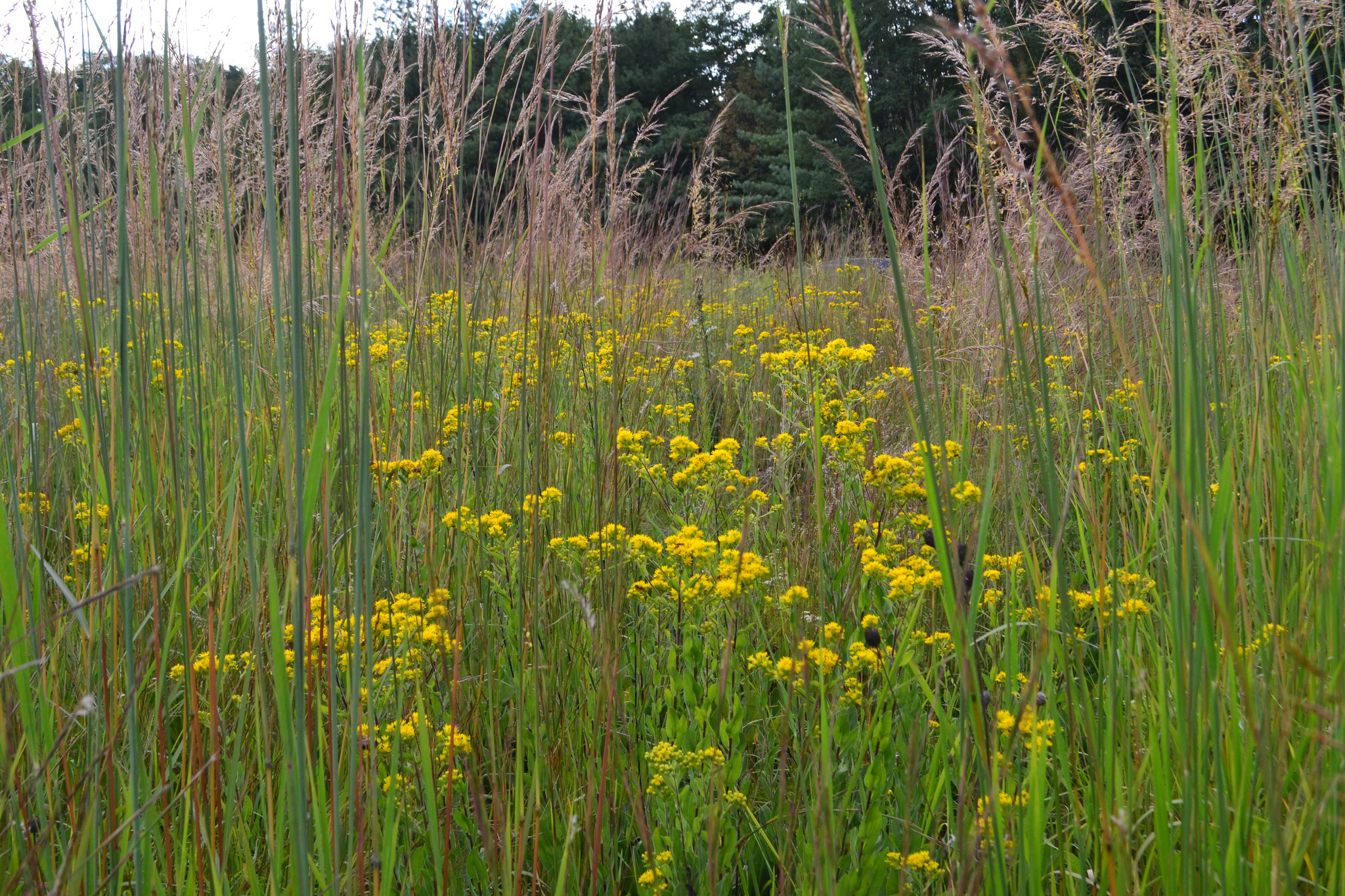What's the only renewable energy that sequesters carbon while restoring biodiversity? Native Grasslands; sequestering an average of 100 tons of carbon per acre in the soil, while producing 3-6 tons of biomass per acre, which is the renewable energy harvest. Since it's the only renewable energy that in anyway restores an ecosystem, we call it a Restorative Energy.
The way prairie grass biomass becomes an efficient source energy is through condensing it into pellets to use as a coal replacement for electricity production and for direct heating for buildings (commercial, industrial, residential). Ethanol production conversely (conversion to liquid fuel) is a net-loss of energy whether it's from corn, soybeans, wood, or grass, as it takes more fossil fuel energy to produce it, than it yields, yet 40% of our corn production is wasted on this net-loss energy production. Conversely, Grassland Biomass has a 10 to 1 energy output per input ratio.
Native prairie grasses, harvestable above ground biomass is 3-6 tons per acre, during the winter. Below ground biomass is about 100 tons per acre, lowering the parts per million of carbon in the atmosphere. This makes temperate grasslands about equal in carbon sequestered per acre to tropical rainforests.
Prairies contrast with wind and solar as a restorative energy through the fact that the infrastructure (grasslands) is a form of habitat that will restore a level of biodiversity. The biomass energy produced is renewable because it doesn't add additional carbon to the atmosphere that wouldn't be re-sequestered in the following year's vegetative growth (Carbon Neutral). Above ground vegetation in prairies is destined for the atmosphere either through decay or burning either way, harvesting the biomass just turns the vegetation into a renewable energy (biomass pellets) before it decays or is burnt on-site. This carbon is then recaptured from the atmosphere through the following years vegetative growth, making the burning of it carbon neutral.
Native prairie plant root systems. About 1/3rd of the prairie roots break down each year, some of which becomes bound to soil particles as stable carbon. Over the decades, this carbon accumulates to an average of 100 tons per acre in the soil before leveling out. Wetter soils hold more carbon, drier soils hold less, in general.
Biodiversity increase and carbon sequestration are two things wind farms and solar panel fields do not support, though wind farms could potentially be married with grassland biomass production prairies. This is why Prairie Biomass needs to be a part of every renewable energy conversation in the U.S.
The only ecosystems that sequester significantly more carbon than grasslands are boreal forests where decay is slowed by low temperatures, and wetlands where decay is slowed by saturation. Grasslands sequester about as much carbon per acre as tropical rain forests, but in the soil, not in the above ground vegetation. Hemp, and Non-Native Bamboo have little ecological/biodiversity value in comparison to native prairies, and do not hold the soil carbon sequestration value for lowering the PPM in the atmosphere, making native grassland restoration the best foot forward.
Stiff goldenrod competes well with the tall grasses of the prairie like Big Bluestem, Switchgrass and Indian grass. Wide scale restoration of prairies for biomass spells the end of many conservation issues such as pollinator decline and the historical decline of native prairies, some of which less than 1% remain.
This is a remnant tall grass prairie west of Columbus Ohio of the Darby Plains region. This half of an acre remnant once stretched across millions of acres of Ohio, currently now nearly all livestock feed. What's happening around the world today; the conversion of ecosystems into livestock feed, has already happened in the U.S. primarily during the 1800's and 1900's. The soybean/corn crops are converted at a 87%-99% waste ratio into meat. Learn more here: http://www.pioneersprouts.com/blog/2019/1/7/the-number-1-source-of-ecosystem-displacement-in-the-eastern-us
To make space for significant restoration of native grasslands as a biomass source of energy , like with other biodiversity and climate change mitigations, it requires a great reduction in the production of livestock feed.
This presentation indicates that wildflower diversity in these plots decreases grass biomass but increases overall biomass production, suggesting these biomass fields can much more than prairie grass. See the 22-25 minute mark for a quick summary of those findings: https://www.youtube.com/watch?v=Zxw3IRC1jE4
Consider sharing this article to help people become aware of this biodiversity and climate change mitigation option.





